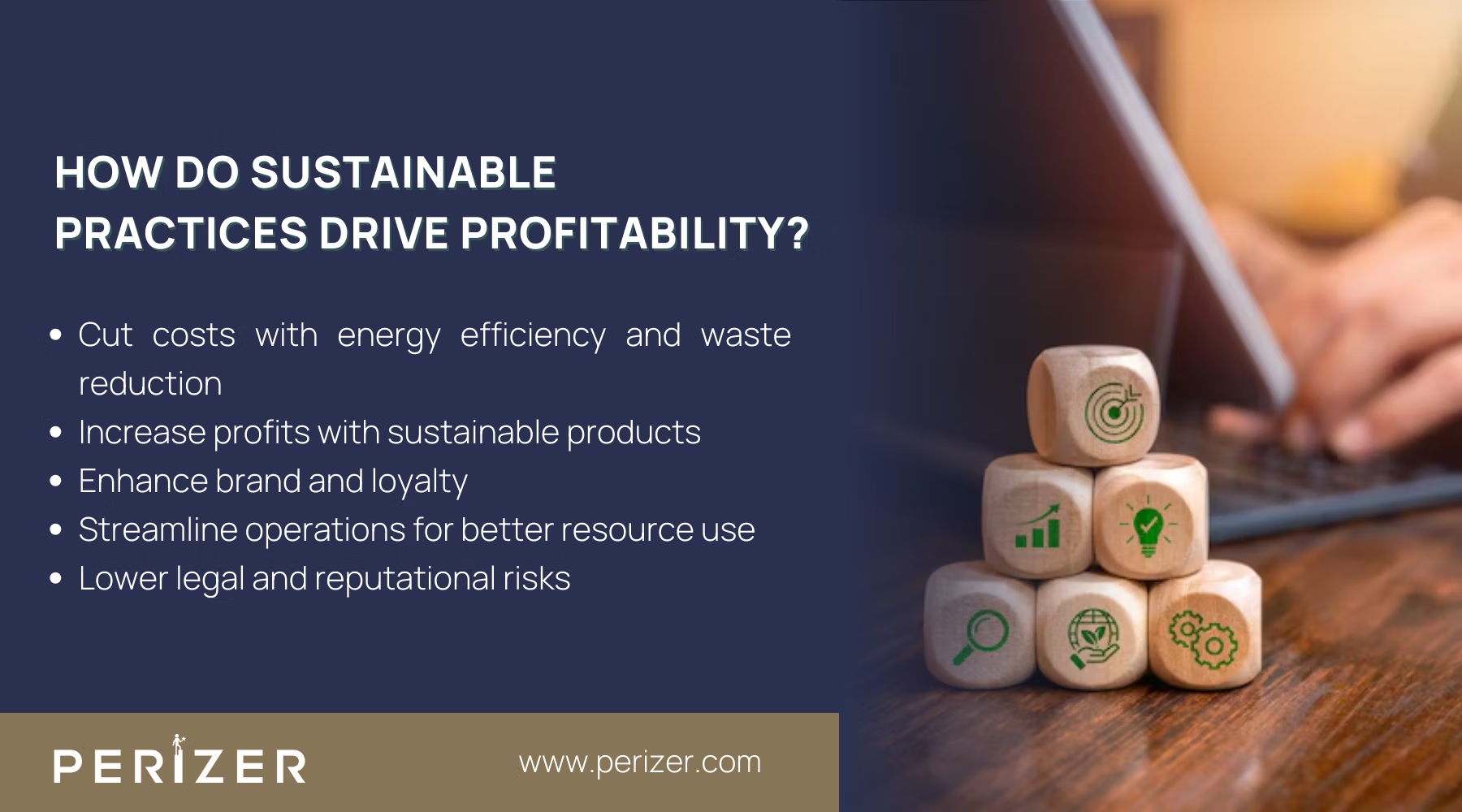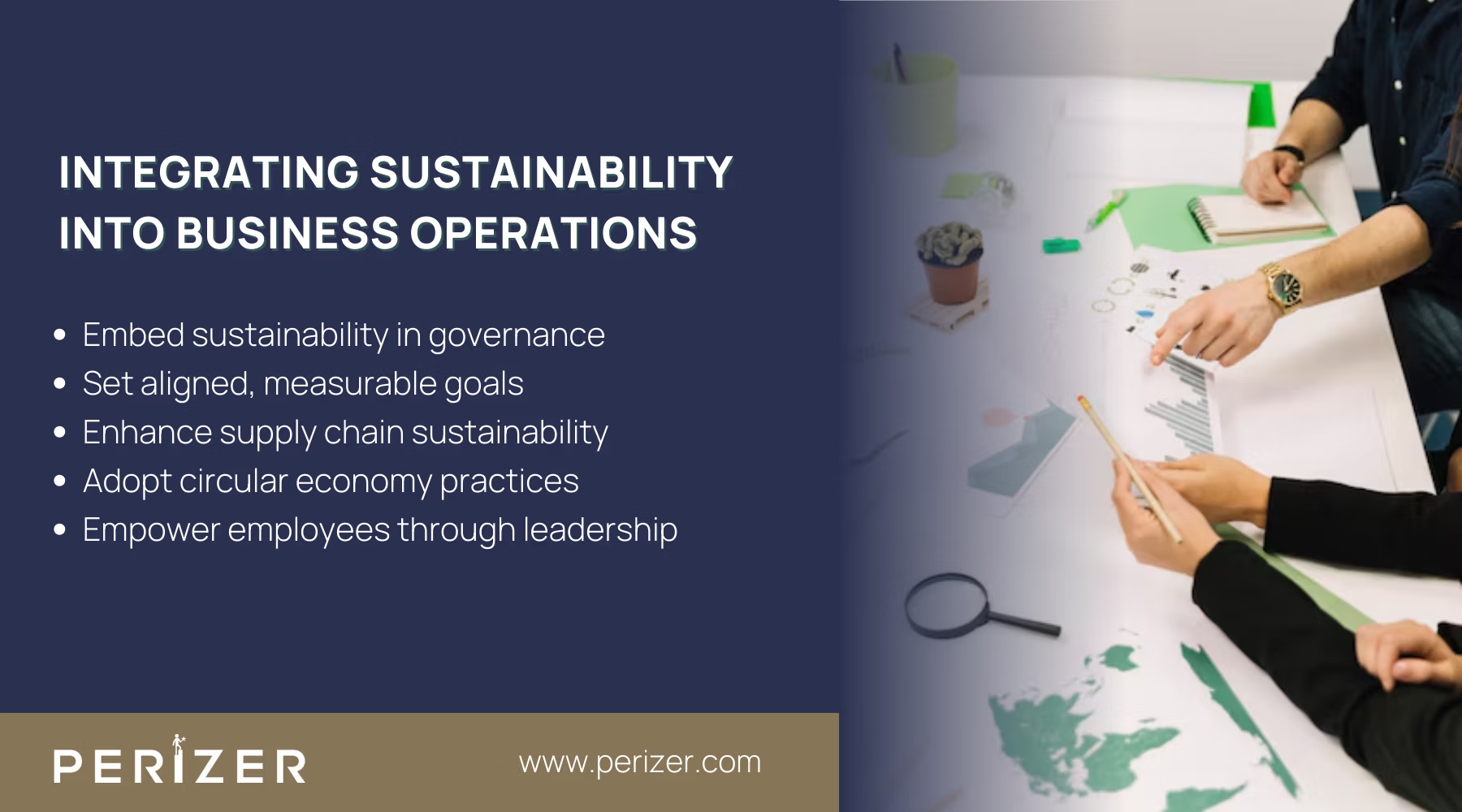How Do Sustainable Practices Impact Business Profitability?
Find out how sustainable practices can directly improve your business's bottom line, driving growth, reducing costs, and strengthening your brand.

In just a few years, businesses that overlook sustainability won’t just struggle - they could be left behind entirely. Sustainability isn't optional anymore; it’s becoming a core expectation. Companies that take the initiative now, integrating sustainable practices into their daily operations, won’t just survive - they’ll lead the way.
But this isn’t just about going with the flow. It’s about seeing how sustainability can directly drive your business's success. You’ve likely encountered the discussions, but what does it mean to run a business that's both sustainable and profitable?
In this guide, we’ll explore how you can make sustainability a key part of your strategy, turning it into a genuine advantage for your business.
What is Sustainability in Business Operations?
Sustainability in business is about more than just going green; it’s about rethinking how your entire operation can meet long-term economic, social, and environmental goals. This means making sustainability a core part of everything you do, from product innovation to supply chain management. The goal is to create real value while also addressing environmental and societal challenges.
Look at how you can innovate your products - using better materials, reducing waste, and designing for longevity. It’s about fundamentally changing how you deliver value to your customers in a world that demands sustainability.
Corporate Social Responsibility (CSR) is also more than a formality; it involves integrating ethical principles into your business practices. When aligned with sustainability goals, CSR can improve your brand, build trust, and identify cost-saving opportunities within your supply chain.
For example, optimizing your supply chain through CSR can reduce costs, improve supplier relationships, and ensure compliance with environmental standards, making your business more efficient and adaptable.
How do Sustainable Practices Drive Profitability?

Let's get into the real impact - how does sustainability affect your bottom line? First, consider cost reduction. Sustainable practices often lead to significant cost savings, but the real advantage comes when you view these practices as part of a broader efficiency strategy. For instance, energy-efficient technologies aren't just about lowering your utility bills - they're about optimizing your entire operational model. When you reduce waste, streamline supply chains, and improve resource utilization, you're not just cutting costs; you're improving your business's overall efficiency and resilience.
But sustainability does more than cut costs - it opens new revenue streams. By innovating products and services that cater to a growing market of eco-conscious consumers, you position your business to capture new opportunities. This isn't about slapping a green label on your existing products; it's about reimagining your offerings to meet the demands of a market that increasingly values sustainability. Companies that have successfully entered this space often see not only increased sales but also higher margins, as consumers are willing to pay a premium for sustainable products.
Brand value and customer loyalty are other important aspects. In a market saturated with choices, sustainability can be the differentiator that sets your brand apart. Customers today are more informed and selective - they're looking for brands that align with their values. By committing to sustainability, you create loyal advocates who increase long-term profitability, support premium pricing, and reduce customer acquisition costs.
Integrating Sustainability into Business Operations

So, how do you make sustainability an important part of your business strategy? It starts at the top. Your commitment to sustainability must be reflected in your corporate governance and decision-making processes. This isn't about assigning a sustainability officer and calling it a day - it's about integrating sustainability into every strategic discussion. Begin by setting ambitious, measurable goals that align with your broader business objectives. Sustainability should be treated with the same rigor as any other strategic initiative - this means regular reviews, KPIs, and accountability at the highest levels.
Implementing sustainability across your value chain is where meaningful change happens. Start by reassessing your supply chain - consider how sustainable your suppliers are and whether there are better options for responsible sourcing.
Then, take a close look at your production processes. How can you reduce waste, lower emissions, and improve efficiency? This isn't just about making small tweaks; it's about rethinking how you operate on a fundamental level. For example, by adopting circular economy principles, you can convert your production from a linear model to a regenerative one, where waste is minimized, and resources are continually reused.
Employee engagement is another important factor. Sustainability initiatives often fail because they lack buy-in from the people who execute them. To drive real change, you need to create a culture where sustainability is everyone’s responsibility. This starts with leadership - your leaders must model the behaviors and values you want to see throughout the organization.
You also need to empower employees at all levels to innovate and contribute to your sustainability goals. This means providing the right training, resources, and incentives to make sustainability a core part of their roles.
Measuring the Impact of Sustainability on Profitability
You can't manage what you don't measure. To understand the impact of your sustainability efforts, you need to measure what matters. It’s essential to track the right metrics that connect your sustainability initiatives directly to financial performance.
For example, don’t just look at energy efficiency in terms of kilowatt-hours saved - consider the actual cost savings those reductions bring. Similarly, when reducing waste, think beyond the tons kept out of landfills; focus on the operational savings and revenue opportunities that come from reusing materials.
Using tools like Tableau or Power BI for data analytics can make a significant difference. These platforms allow you to visualize how your sustainability efforts are impacting profitability. For instance, predictive analytics - available through tools like IBM SPSS or Google Analytics - can help you forecast the financial outcomes of your sustainability projects before they even begin. This way, you can prefer initiatives that offer the best return on investment and continuously refine your approach using real-time data.
Integrating sustainability metrics into your broader business intelligence systems, like SAP or Microsoft Dynamics, ensures you always know how these initiatives are affecting your bottom line. By doing so, you’ll be better equipped to make the best decisions that align your sustainability goals with your financial objectives.
Overcoming Challenges in Sustainability
Sustainability is not without its challenges, and one of the most significant is the perceived cost. However, this is often a shortsighted view. The upfront investment in sustainable technologies or processes can be substantial, but when you take a long-term perspective, the financial benefits often outweigh the initial costs.
The challenge is finding the right balance between short-term expenses and long-term benefits. This means taking a thoughtful approach to financial planning, where you carefully assess the return on investment (ROI) for each sustainability project. To make it happen, you might explore creative financing options like green bonds or sustainability-linked loans to secure the funding you need.
Another challenge is the risk that comes with sustainability initiatives. With regulations getting tougher, businesses that don’t keep up could face serious legal and reputational issues. To avoid this, it's important to stay ahead - don’t just meet the current regulations, but also anticipate what’s coming next. By being proactive, you can turn these potential risks into opportunities, setting your business apart as a leader in sustainability and standing out from competitors who are slower to adapt.
Conclusion
Sustainability and profitability are no longer just ideas - they're practical realities that businesses need to understand to succeed today. By fully integrating sustainability into your business strategy, applying it throughout your operations, and carefully measuring its impact, you can achieve significant financial gains while also helping to create a more sustainable future.
The challenges are real, but so are the opportunities. Those who see sustainability not as a burden but as a strategic advantage will not only stay competitive but also grow, benefiting both the planet and their bottom line.
FOCUSED, FAST, GOVERNMENT READY
Stay Tuned With Our Latest Insights

Staff Augmentation
Learn how to select the perfect IT outsourcing partner to promote your team’s capabilities, improve productivity, and drRead more...

Staff Augmentation
Find the perfect staff augmentation partner by aligning your goals, evaluating expertise, managing costs, and ensuring aRead more...

Cyber Security
We focus on understanding the needs, behaviors, and expectations of your users through extensive user research. This infRead more...